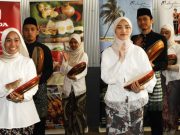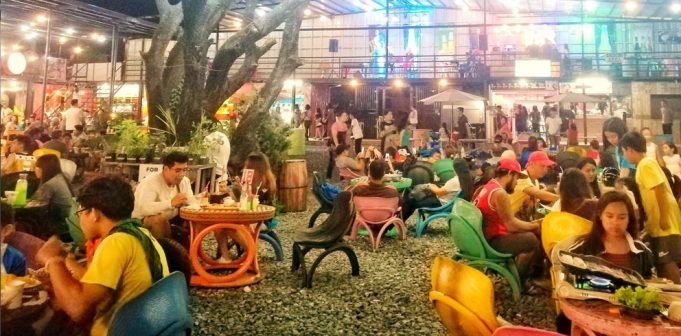CAVITE CUISINES.
(cover photo:) Some of the food choices at Tanza town’s Calle Real. Calle Real is one of Cavite’s food establishments that offer uniquely Caviteño cuisines, using local products. (PNA photo by Gladys S. Pino)
KAWIT, Cavite – Cavite is gradually boosting the food and beverage industry on top of its manufacturing hub, leveraging its “most populous” status to high consumption in retail services as among the top drivers of the province’s economy.
“Given this direction, the Provincial Tourism and Cultural Affairs Office (PTCAO) stepped in to help promote not just Cavite’s rich historical past, but its various gastronomical treasures and what makes Cavite unique for the palates of the food-loving public,” PTCAO officer-in-charge Rozelle Sangalang said.
To position the province as the emerging food destination in southern Luzon, PTCAO embarked on a series of activities “to revolutionise traditional Cavite dishes and delicacies”, through its ‘A Taste of Cavite: An appreciation of Cavite’s Old Cuisines’.
The undertaking aims to make professional chefs and culinary teachers and their students, aware of, appreciate and come up with innovative approaches on how to promote and showcase Cavite’s cultural history of local cuisines, “but without losing its authenticity”, Sangalang said.
These activities include workshops and cooking demonstrations with Razor Philippines Executive Chef and ‘Punong Heneral’ of Cavite’s Culinary Generals, Chef Christopher G. Carangian, and culminate in a ‘culinary tour’ to showcase some of Cavite’s famous cuisines and dishes.
The tour had its initial run where it showcased famous, heirloom cuisines in the municipalities of Kawit, Tanza and Amadeo, as well as in the cities of Imus and Tagaytay.
Aside from satisfying one’s palate, the tour offers snippets of history and traditions and reflects some traits of the towns and their people with the way they prepare and share their famous dishes.
The first stop, where the province’s greatness is rooted, is the historic Kawit town.
Chef Michelle Ortega taught the participants not just how to cook the favourite dish of General Aguinaldo, but highlighted what makes it unique compared to other Cavite towns’ versions.
Kawit’s ‘adobong dilaw’ uses turmeric “because of its therapeutic features”, unlike the ‘achiote’ or Annato seeds – an orange-red condiment and food colouring used not just to impart a yellow or orange colour to foods, but sometimes also for its flavour and aroma – used by the other Cavite towns.
A buffet of toclongganisa from Imus City’s Toclong 1st Multi-Purpose Cooperative came next, where preparations using old recipes passed on from generation to generation were featured.
Imus City’s longganisa uses no vinegar, but has garlic and has a similarity to what?, although it is more intensely flavoured than the Hungarian sausage.
Lunch was at Casa Real in Tanza town where guests partook of the Spanish-Filipino cuisine.
This location was chosen as they serve Caviteño cuisines where ingredients are sourced from what is available in the locality.
The appetiser is dried pusit (squid) with tamarind sauce and ‘patis tanza’ (as Tanza is a coastal town, their patis or salty sauce version is made of alamang or shrimp and not fish) and they use available local products.
For the main course, the owners of this nearly century-old house prepared ‘kalandrakas – a mix of vegetables, whatever is available in the surrounding area like legumes, sweet potatoes and the ‘heart’ or the flower bud of a banana mixed with noodles.
The dish earned its name from the old tradition where money is not the help, contribution you give to the dead, but whatever you harvest.
The other food choices included ‘kaldereta’, an heirloom recipe which forms part of the establishment’s Spanish specialities.
Its large cut was due to the absence of refrigerators in the past, where all the ingredients were cooked at the same time and the remaining pieces were shared with the neighbours.
There was also crunchy pork ‘binagoongan’ (pork laced with shrimp paste), tokwa (soya bean) ‘sisig’ (a Filipino dish made of minced pork, chopped onions and chicken liver) for the health conscious, Paella (which uses squid, due to the coastal features of Tanza) and lemon ginger mint for refreshment.
A tour of Cavite is not complete without visiting Amadeo town, the coffee capital of the Philippines and famous for its Pahimis festival.
The last stop is at Amira’s in Tagaytay City, famous for its ‘buko’ (fleshy coconut) pie.
The PTCAO is set to engage more stakeholders for events like this, to ensure that the traditional cuisines are promoted, preserved, yet adapted to the changing palates of food lovers.
Cavite, located on the Southern shores of Manila bay, abounds not just with historic sites and landmarks – being home to a number of Filipino heroes – but also offers a wide range of food specialities to satisfy one’s taste buds. (PNA)























